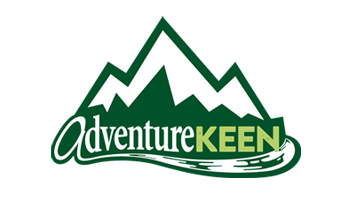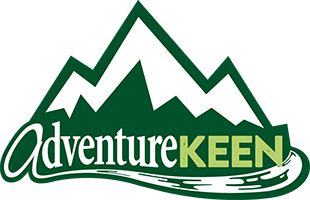
The AdventureKEEN Blog

Venture into the Wild with Sam Rivers: A Wildlife Mystery Series from Adventure Publications
If you’re already a follower of the wide variety of nature-focused titles from Adventure Publications, prepare to experience the great outdoors in an entirely new way with the Sam Rivers Mystery series by Cary J. Griffith. This captivating collection combines the thrill of well-crafted mysteries with the author’s deep knowledge of wildlife and wilderness settings, creating a reading experience that’s as educational as it is entertaining. Sam Rivers isn’t your typical mystery protagonist. As a […]

Stan Tekiela’s Column: Sherman’s Fox Squirrel
I find diversity to be the special ingredient underpinning the strength of Mother Nature. This was abundantly clear last week when I was in Florida to photograph a very specific variation of the common and widespread eastern fox squirrel (Sciurus niger). I was in search of the Sherman’s fox squirrel (Sciurus niger shermani), a subspecies that only occurs in a handful of places in Florida and a couple of other states. The fox squirrel is […]

Discover the Wonder of Birds with Whose Feather Is That? by Stan Tekiela – Launching April 1st!
Are you ready to embark on a fun, educational journey into the world of birds? Mark your calendars for April 1st, 2025, as award-winning author and naturalist Stan Tekiela invites you to explore his latest masterpiece, Whose Feather Is That?. This interactive, beautifully illustrated children’s book is the perfect way to ignite curiosity about wildlife and foster a love for nature in young readers. Why Whose Feather Is That? Is a Must-Have for Your Bookshelf […]

New Kids’ Book Alert: Pollinators & Native Plants for Kids by Jaret C. Daniels – Coming April 8th!
Are you looking for an engaging and educational book to introduce kids to the wonders of nature? Pollinators & Native Plants for Kids by Jaret C. Daniels is the perfect guide for young readers eager to learn about plants, pollinators, and the important roles they play in our environment. This beautifully illustrated book, releasing on April 8th, 2025, is packed with fascinating facts, hands-on activities, and colorful images that make learning about nature fun and […]

Celebrating Indie Press Month: Spotlight on Menasha Ridge Press and Wilderness Press
Indie Press Month is a time to shine a light on the world of independent publishing. This yearly celebration serves as a platform to recognize and support the important contributions of indie presses to the literary world. Among the many significant independent publishers, Menasha Ridge Press and Wilderness Press stand out with their focus on outdoors and adventure titles. The Significance of Indie Press Month Indie Press Month is a key initiative that brings attention […]

Mushroom Finder Exclusive: Interview With Expert Jacob Kalichman
Mushroom Finder is a new addition to the Nature Study Guide Finders series started by May Theilgaard Watts in the 1930s. Author Jacob Kalichman is a field mycologist who maintains suggested common names and associated guidelines for North American fungi. When did your interest in fungi begin? It started abruptly in 2010. I had already been interested in finding and identifying bugs and snakes for a few years, so it wasn’t a big leap. But I […]

Admiring the Small-but-Mighty Northern Pygmy Owl
Stone-cold killers come in all shapes and sizes in the natural world. However, we often think of large, menacing creatures with long, sharp claws and razor-sharp teeth as predators and don’t give a second thought to the small ones. Some of these small predators are often cute and adorable. That’s what makes them so cool. I was thinking about this a week or so ago while I was photographing an adorable tiny owl. Behind the […]

Discover the Magical World of Mushrooms: A New Book for Young Nature Lovers
Have you ever spotted weird and colorful mushrooms while walking in the woods and wondered what they were? A fascinating new book called Mushrooms & Fungi for Kids: An Introduction to Mycology, by Ariel Bonkoski, is here to help young nature enthusiasts explore the amazing world of fungi! Unlike most mushroom books that focus on which mushrooms you can eat, this book takes a different approach. It’s all about discovering how cool and unusual fungi […]

Bird Nest Finder Exclusive: Interview With Expert Dorcas S. Miller
Dorcas S. Miller, founding president of the Maine Master Naturalist Program, is the author and illustrator of Bird Nest Finder, in addition to more than a dozen other nature guides in the Finders series, including Track Finder, Scat Finder, Winter Weed Finder, Berry Finder, and Constellation Finder. Her Finders books have sold over half a million copies. Bird Nest Finder is her newest one, released in October 2024. What inspired you to write Bird Nest […]


